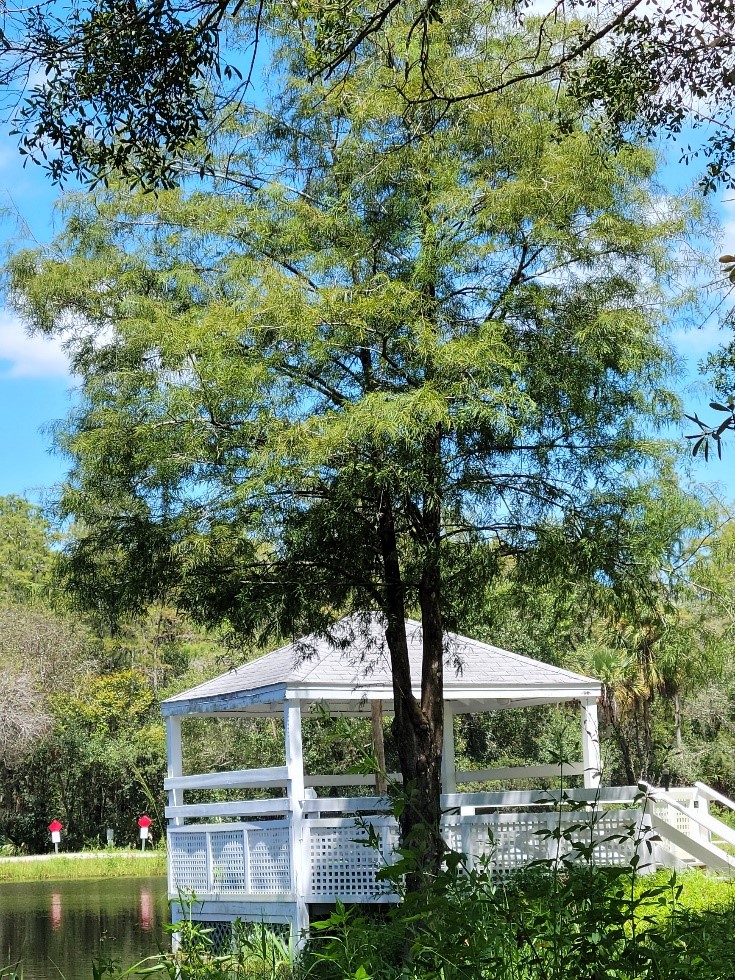With the waters high in the cypress areas of our county, now is the perfect time to see the Bald Cypress (Taxodium distichum) at its best. This tree is a native deciduous conifer that plays a highly important ecological role in the Florida environment. While most conifer trees retain their needles throughout the year, the bald cypress loses its needles during the colder winter months in Florida. This tree can live for hundreds of years and can grow up to 150 feet in height. This tree can be found throughout Florida as well as coastal regions of the Gulf and as far north as Delaware. The bald cypress thrives in acidic soil. The young seedlings tolerate part sun and thrive in the full sun later on in life. This plant species is ideal for landscapes that experience flooding water up to several feet in depth, but they flourish in normal/dry soil.
The elements of this tree species that have helped establish it as a beautiful landscape element have also made it an important economic asset during the early 20th century as early explorers came to settle Florida. The wood of the bald cypress is naturally insect and rot resistant which makes it a highly sought-after tree species for woodworking. A popular use for cypress during these times was house shingles. During the 1930s, Florida was the number one in cypress production. This was a problem for Florida’s wildlife as thousands of acres of old-growth forests were cut down in south Florida and the rest of the state.
The trunks of these stately trees are tapered and buttressed. Their roots have knobs that come out of the ground called knees. Theories about these knees are that they provide the roots with oxygen and store nutrients. The Bald Cypress tree is excellent at flood control. Cypress trees create ‘cypress ponds’ that are depressions in the ground that are able to absorb storm runoff.
Water quality is maintained and controlled with the presence of bald cypress. The soil and trees remove phosphorus and nitrogen from treated wastewater. These forests are also home to a large variety of animals, such as the Florida panther and other native Florida fauna.
This plant column is a joint effort by all at In the Garden, a Sanibel garden center located at 3889 Sanibel Captiva Rd., Sanibel, Florida.
